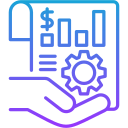
Managing Payrolls and Wages in Malaysia: Your Friendly Field Guide
Chosen theme: Managing Payrolls and Wages in Malaysia. Welcome! Here you will find clear guidance, relatable stories, and practical checklists to run Malaysian payroll confidently, stay compliant, and build trust with your team. Ask questions, share your wins, and subscribe for fresh, local payroll insights.
Malaysia’s Payroll Landscape at a Glance
Start with the Employment Act (as amended), the Minimum Wages Order, the Income Tax Act, plus EPF, SOCSO, and EIS regulations. These anchor how you calculate wages, overtime, deductions, and benefits. Save this list, subscribe for updates, and ask us anything unclear.

Wages, Overtime, Leave, and Public Holidays
Define what counts as wages versus reimbursements, separate fixed allowances from discretionary payments, and use the ordinary rate to calculate overtime and unpaid leave. Align your policy with the Employment Act, document examples, and walk employees through scenarios during induction to prevent confusion.


Wages, Overtime, Leave, and Public Holidays
Apply statutory multipliers exactly as prescribed and log approvals before overtime happens. A Johor factory avoided disputes by digitizing timesheets and tagging overtime reasons. Track hours, meal breaks, and shift differentials precisely, then explain the final calculations on the payslip to build credibility.
Technology, Automation, and Integrations in Malaysia

Connect payroll software with LHDN e-PCB, EPF i-Akaun (Employer), and SOCSO Assist file formats, plus your bank’s GIRO templates. A Penang cafe cut processing time by half after standardizing imports and exports. Share your integration wins or headaches; someone here has solved them.
EA forms, E submission, and tidy ledgers
Issue accurate EA forms to employees, verifying names, identification numbers, and totals. Submit employer filings through LHDN e-Filing according to published deadlines. Align ledgers with payroll registers and bank statements. Comment if you want our year-end checklist; we send it to subscribers first.
Reconcile EPF, SOCSO, and EIS every month
Match contribution schedules to payroll line items, confirm wage ceilings, and resolve underpayments promptly to avoid compounding penalties. Keep a reconciliation workbook shared with finance. This discipline makes year-end a review, not a rescue mission, and impresses auditors every single time.
An audit story with a happy ending
A Kuala Lumpur startup faced PCB variances from bonus rounding. They rebuilt calculations using official tables, annotated payslips, and wrote a policy addendum. The auditor praised the clarity. Share your audit lessons learned to help others avoid the same stress next year.
People-first Payroll: Communication and Trust
Present gross, allowances, deductions, and net clearly, with statutory items labeled plainly. Add short explanations for PCB, EPF, SOCSO, and EIS. Consider bilingual notes and a QR link to your policy. Fewer mysteries mean fewer queries and greater confidence in your payroll team.


People-first Payroll: Communication and Trust
Explain your payroll cycle, cut-off dates, bank details process, and how PCB, EPF, SOCSO, and EIS work. Encourage new joiners to submit relief information correctly. This 20‑minute briefing reduces month-one panic and sets a respectful tone. Share your onboarding script; we will compare notes.
